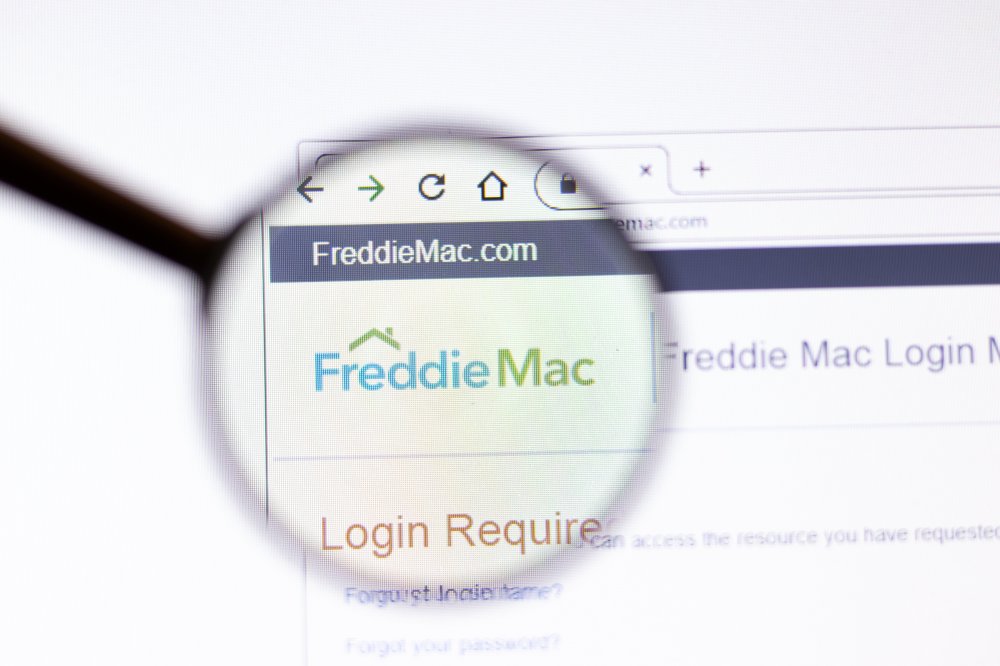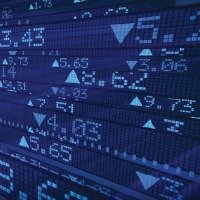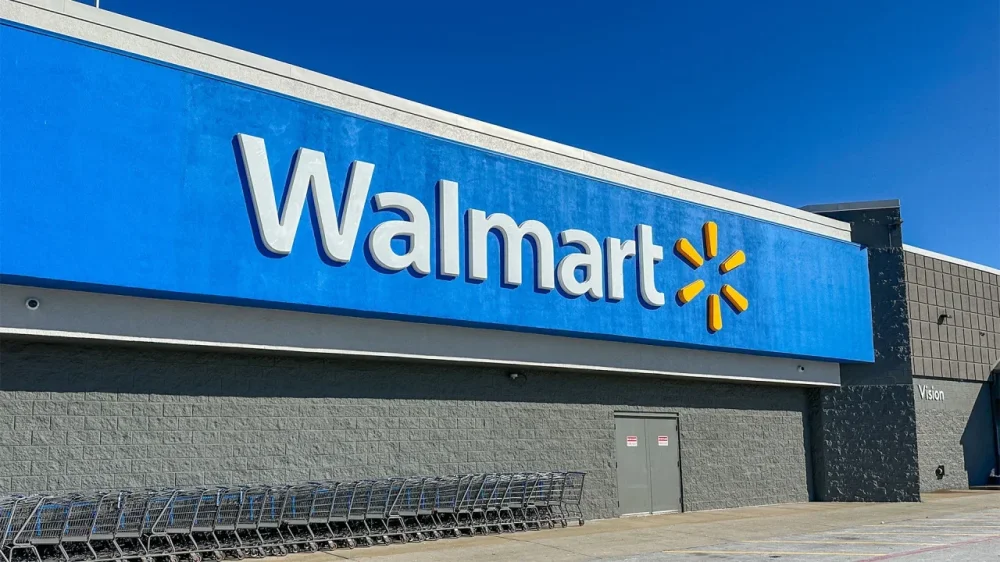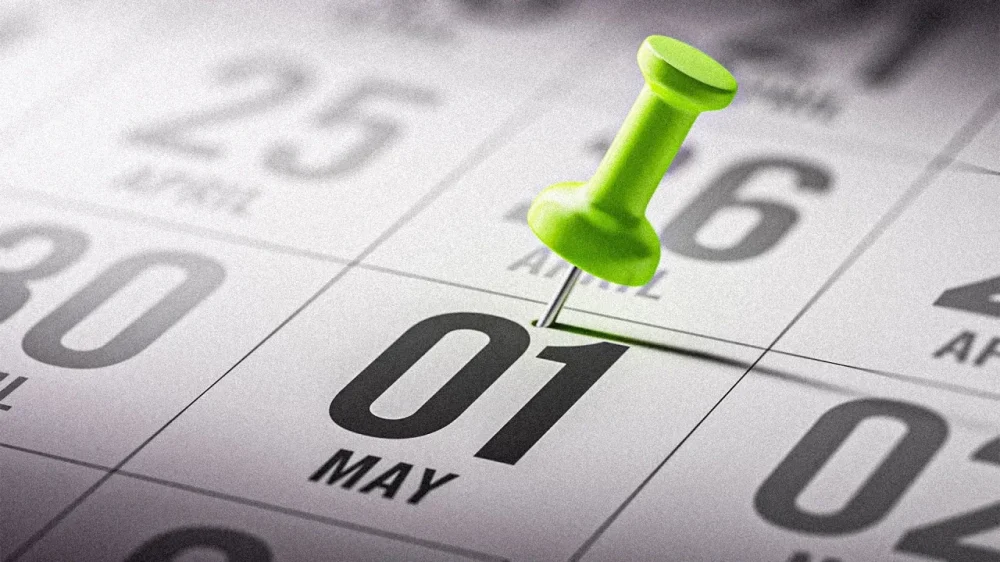All Activity
- Past hour
-
MSR market faces 'deer in headlights' moment
Mortgage servicing rights owners making their plans for 2025 are dealing with additional stress beyond the normal opaque nature of the business, SitusAMC said. View the full article
-
Zoho Integrates Advanced AI Tools into Creator Platform to Accelerate Business App Development
Zoho Corporation has announced the launch of ten new features and services within Zoho Creator, its low-code application development platform, aimed at simplifying and speeding up business app creation. The latest additions include an AI-powered assistant, CoCreator, and a suite of contextual AI tools designed to streamline every phase of the app development lifecycle. These updates are now available to all users at no additional cost. The enhancements reflect Zoho’s broader commitment to incorporating artificial intelligence in practical, privacy-respecting ways that drive real-time value for business users. CoCreator, powered by Zoho’s AI assistant Zia, allows users to build applications using voice and written prompts, process diagrams, and business specification documents. “Since Creator’s introduction in 2006, the focus has been on simplifying and speeding up the app development process without sacrificing functionality. This enabled our users to launch millions of apps successfully,” said Raju Vegesna, Zoho’s Chief Evangelist. “AI allows us to take it to another level, shortening the time from an idea to an app. Today’s announcement raises the baseline on speed of quality app creation with deep capabilities, without adding costs.” Key AI-Powered Features Now Available in Zoho Creator The update includes the following: Idea-to-App Generation: Using either ZohoAI or OpenAI, users can convert text, voice prompts, flow diagrams, or SRS documents into full applications. These include contextual integrations, automations, dashboards, and permission sets. Component Generation with AI: Creator now supports AI-assisted form building, where Zia suggests contextual fields, enhancing existing apps without manual form configuration. Code Generation and Optimization: Developers can use prompts to generate or enhance code blocks automatically, allowing for performance improvements and clear annotations. Data Cleansing and Modelling: AI-powered data prep tools allow users to transform unstructured data from various formats into structured, application-ready datasets. AI Skills: Currently in Early Access, this feature allows apps to interpret natural language instructions and automate complex workflows using Deluge and specialized AI models. General availability is expected in June 2025. Custom AI Models: Businesses can now deploy custom models using their own datasets for tasks such as OCR, object detection, and prediction. Zoho’s Approach to AI and Privacy Zoho reiterated its commitment to developing AI guided by customer privacy and utility. The company states that its AI tools are not trained on consumer data and do not retain customer information. Its approach balances performance with cost efficiency, ensuring that advanced AI capabilities remain accessible. Zia, which has been part of Zoho’s platform since 2015, plays a central role in delivering AI across the company’s software suite. With Zoho’s full tech stack under its control, the company emphasizes that it can deliver highly contextualized and integrated AI experiences across its product portfolio. This article, "Zoho Integrates Advanced AI Tools into Creator Platform to Accelerate Business App Development" was first published on Small Business Trends View the full article
-
How to Manage a Project in 10 Steps
Whether a professional project manager or an accidental project manager who suddenly finds a project assigned to them, knowing how to manage a project is essential. You can never know enough for the journeymen and newbies should try to wing it. Let’s break down the process of how to manage a project step by step. Below are the 10 pieces that show how to manage a project successfully. While we recommend using project management software, for those not ready to upgrade, we end with free templates. 1. Define the Project Goals and Objectives Defining clear goals and objectives is the foundation of how to manage a project successfully. This step ensures all stakeholders have a shared understanding of what the project aims to achieve and provides a roadmap for decision-making, planning and execution. Start by identifying the project purpose. Use SMART (specific, measurable, achievable, relevant and time-bound) goals and know the difference between goals and objectives (the former are broad, high-level outcomes the project aims to achieve, while the latter are specific, actionable steps to achieve the goals). Be sure to engage clients, team members and executives to ensure the goals are aligned with stakeholder expectations and business needs. Record the goals in a project charter or scope statement and share them with the team to ensure clarity, accountability and commitment. This provides a clear benchmark for measuring success, minimizes scope creep and helps to prioritize tasks and resource allocation when scheduling work on a Gantt chart. Gantt charts are usually part of project management software, which adds efficiency to the project management process. ProjectManager is award-winning project and portfolio management software with robust Gantt charts that schedule tasks, resources and costs. They can also link all four types of task dependencies to avoid cost overruns, filter for the critical path and set a baseline to track planned effort against actual effort in real time to help projects stay on track. Get started with ProjectManager today for free. /wp-content/uploads/2025/03/Gantt-CTA-2025.jpgLearn more 2. Identify Project Stakeholders and Make a Plan to Engage Them Since we’ve mentioned stakeholders, let’s define what they are. Stakeholders are individuals, groups or organizations that have an interest in or are affected by the project. Identifying them early and planning how to engage them ensures strong communication, collaboration and project success. Stakeholders can be internal, such as the project sponsor, team members, senior management and other departments, or external, such as clients or customers, vendors and suppliers, regulatory bodies and investors or partners. These are first identified and then categorized by the amount of influence and interest they have in the project. The next part of how to manage a project is developing a stakeholder engagement plan. This includes the communication method they prefer (meetings, progress reports, emails, etc.), who the responsible person is that gets that missive and the frequency of the communication. Be sure to manage stakeholder expectations by being clear about the project scope, deliverables and timetables. Address concerns proactively to maintain trust and stay flexible and adjust engagement strategies based on stakeholder feedback. This ensures alignment, reduces conflicts and misunderstandings, improves decision making and gets buy-in and support. 3. Make a Work Breakdown Structure to Define the Project Scope A work breakdown structure (WBS) is a key tool in project management that helps define and organize the project’s scope by breaking it down into smaller, manageable components. It ensures clarity, accountability and effective planning by identifying all essential tasks, deliverables, milestones and dependencies. By using a WBS, project managers can visualize the entire project, allocate resources effectively and set realistic deadlines, which is important when figuring out how to manage a project. It prevents scope creep and ensures all project elements align with the defined objectives. Project Tasks: Specific actions or work packages that must be completed to achieve project goals. Tasks should be clearly defined, assigned and measurable. Project Deliverables: The tangible or intangible outputs that result from completing tasks. Deliverables should align with project goals and stakeholder expectations. Project Milestones: These are major checkpoints that indicate progress in the project life cycle. Milestones help track whether the project is on schedule. Task Dependencies: The relationship between tasks, where one task depends on another before it can start or finish. Identifying dependencies ensures a logical workflow and prevents bottlenecks. /wp-content/uploads/2025/02/PM-101-eBook-banner-ad.jpg 4. Make a Project Schedule A project schedule is a detailed timeline that outlines all project activities, tasks, milestones and deadlines. It serves as a roadmap to ensure the project is completed on time and within scope, helping teams stay on track and efficiently manage resources. When it comes to how to manage a project, the schedule is critical. It includes task assignments, estimated durations, task dependencies, milestones and resource allocation. This keeps projects organized and on track, identifies potential delays and risks early, allocates resources efficiently and improves team coordination. Below are some methods and tools to help make the schedule. Critical Path Method (CPM): Identifies the longest sequence of dependent tasks to determine the shortest project duration. Helps prioritize critical tasks to avoid project delays. Program Evaluation and Review Technique (PERT): Uses optimistic, pessimistic and most likely time estimates to calculate task durations. Useful for projects with high uncertainty in task completion times. Project Network Diagrams: A visual representation of project tasks and their dependencies. Helps identify bottlenecks and task sequencing for smooth execution. Gantt Charts: A bar chart that visually maps tasks over a timeline. Shows task start and end dates, dependencies and progress. Widely used for tracking deadlines and resource allocation. 5. Define the Project Resource Requirements Project resource requirements refer to the people, materials, equipment, budget and technology needed to complete a project successfully. Identifying and allocating these resources ensures that the project progresses smoothly, stays on schedule and remains within budget. This ensures efficient resource utilization and prevents shortages. It also helps control project costs and avoid budget overruns. Identifying, allocating and managing resources improves task execution, workflow efficiency and reduces risks associated with delays and misallocation. 6. Estimate Costs and Make a Project Budget Cost estimation involves predicting the total expenses required to complete a project, while a project budget is a financial plan that outlines all expected costs, resource allocations and financial constraints. A well-planned budget ensures cost control, financial efficiency and project feasibility. How to manage a project includes identifying cost categories: direct costs, which are expenses directly tied to project execution and indirect costs, which are overhead costs that support the project. There are also contingency costs that are a buffer for unforeseen risks or changes. Several cost estimating methods can be used, from analogous (uses past project data) to parametric (applies statistical formulas based on project size and complexity) and bottom-up (breaks down tasks into individual costs and sums them up) to three-point (uses optimistic, pessimistic and most likely cost estimates for accuracy). Next, develop a budget by organizing estimated costs into a structured budget plan. Make sure that there is financial alignment with the project goals and funding availability. Distribute budgeted funds across different phases of the project life cycle and set aside a contingency reserve for unexpected expenses. Budgets must be monitored and expenses tracked throughout the project’s life cycle. 7. Identify Potential Project Risks and Define Mitigation Strategies Project risk management involves identifying, analyzing and addressing potential risks that could impact the project’s success. Risks can arise from budget constraints, resource shortages, technology failures, stakeholder conflicts or external factors like regulatory changes. A proactive approach to risk management helps ensure smooth project execution and minimizes disruptions. Once risks are identified by conducting a brainstorming session, reviewing historical data and using a risk breakdown structure, they must be analyzed and prioritized. This is based on the likelihood of the risk occurring and its impact on the project. A risk matrix helps to classify risks as low, moderate, high or crucial. A mitigation strategy to determine whether risks should be eliminated, reduced, transferred or accepted will also be created. Risk identification and mitigation are critical to how to manage a project. They prevent delays and costly setbacks. This also leads to improving decision-making with proactive risk planning. Stakeholder confidence is enhanced, which supports project success. Finally, it ensures smooth execution by reducing uncertainties. 8. Procure Project Resources from Vendors Project procurement involves identifying, selecting and managing external vendors or suppliers to obtain the necessary resources, such as materials, equipment or services, needed to complete a project. A well-planned procurement process ensures quality, timely delivery and cost-effectiveness while minimizing risks. This begins by defining procurement needs, researching and identifying potential vendors. Then, request quotes and proposals, negotiate contracts and terms and issue purchase orders. After this, how to manage a project requires the close monitoring of vendor performance and deliveries to ensure all is going as planned. 9. Assemble a Project Team and Begin Project Execution Assembling a project team involves identifying, selecting and assigning roles to individuals with the skills and expertise needed to complete the project successfully. A well-structured team ensures efficient collaboration, accountability and smooth project execution. To assemble a project team, first define the project roles and responsibilities by using a RACI matrix to determine who is responsible, accountable, consulted and informed for each task. Also, assign roles based on skills, experience and project needs. Then select and onboard team members. Explain the project details, goals and expectations and provide them with the necessary tools, resources and training. Set up regular meetings and establish the collaborative process. Once the team is in place, project execution begins—this is the phase where the project plan is put into action and tasks are carried out to achieve project objectives. 10. Use a Project Tracking Software to Monitor Project Execution Project tracking is the ongoing process of monitoring progress, identifying risks and ensuring the project stays on schedule, within budget and meets quality standards. Using project tracking software helps teams stay organized, accountable and adaptable throughout execution. When looking for project tracking software, use one with real-time visibility into the project progress. This allows project managers to identify risks easily and adjust plans proactively. It also improves team accountability and communication, keeps projects on track, within budget and aligned with goals. Free Project Management Templates For those who are not ready to upgrade to project tracking software or project management with a full suite of features to plan, manage and track projects, there are workarounds. These free templates, a few of the over 100 project management templates for Excel and Word on our site, can help with figuring out how to manage a project. Project Plan Template Download this free project plan template for Word to organize, track and document all the key elements required for a successful project. It serves as a guide throughout the project life cycle, outlining all tasks, timelines, resources, risks and deliverables. Project Budget Template Use this free project budget template for Excel to plan and track all the financial aspects of a project. It helps project managers allocate resources, set financial goals and monitor expenditures throughout the project lifecycle. Project Dashboard Template A project dashboard is a visual tool used to track and display key project metrics, progress and performance at a glance. This free project dashboard template for Excel consolidates important project data into a single view, making it easier for project managers, stakeholders and teams to monitor the project’s health. How to Manage a Project With ProjectManager As mentioned above, it’s not recommended to manage a project with templates. They are a cheap alternative, but one gets what they pay for. Templates are fine for some things, but managing dynamic projects with static documents is not one of them. Project management software is designed to work more efficiently. ProjectManager is award-winning project and portfolio management software that plans and schedules projects with multiple views. We’ve already mentioned our powerful Gantt charts, but teams can choose between kanban boards and task lists to execute their tasks, while stakeholders can get a monthly overview of the project on the calendar view. Allocate Resources and Monitor Their Utilization Human and nonhuman resources are scheduled on the Gantt chart, but before assigning tasks to teams, set their availability when onboarding. This shows who has PTO, vacation or when global holidays occur. It also lists skills and pay rate, all of which streamline the assignment process. To view resource allocation across one or multiple projects, use the color-coded workload chart. It makes seeing who is overallocated or underutilized quick and easy. Then, balance the team’s workload to keep everyone working at capacity without leaving the chart. There’s also a team page that shows daily or weekly activities. It can be filtered by progress or priority and tasks can also be updated without leaving the page. /wp-content/uploads/2023/01/Team-Light-2554x1372-1.png Track Time, Cost and Progress With Real-Time Dashboards How to manage a project might hinge on tracking. Without monitoring project metrics, the project is blind. To get a high-level overview of progress and performance, toggle to the real-time project or portfolio management dashboards. They automatically collect live data and display it on easy-to-read graphs and charts showing time, cost, workload and more. Customizable reports go deeper into status, variance, workload, timesheets and more. Each can be filtered to focus on specific data points or more be more general and shared with stakeholders to keep them updated. Even our secure timesheets help track labor costs to keep on budget. /wp-content/uploads/2022/07/Dashboard-light-mode.jpg Related Project Management Content There’s a lot more about how to manage a project than the 10 steps we outlined above. For readers interested in learning about the project life cycle, documentation and more, below are a handful of recently published articles from our blog. What Is the Project Life Cycle? Project Phases Explained Project Documentation: 15 Essential Documents How to Write Effective Project Objectives & Goals Every Time Project Management Tools & Techniques Project Management Basics: Definitions, Methods and Tools ProjectManager is online project and portfolio management software that connects teams whether they’re in the office or out in the field. They can share files, comment at the task level and stay updated with email and in-app notifications. Join teams at Avis, Nestle and Siemens who use our software to deliver successful projects. Get started with ProjectManager today for free. The post How to Manage a Project in 10 Steps appeared first on ProjectManager. View the full article
-
Freddie Mac expands repurchase alternative technology
The move builds out a fee-based resolution for certain loan flaws piloted in 2024, which was set for a full 2025 rollout prior to changes in federal leadership. View the full article
- Today
-
Starbucks is about to “uplift” 2,000 stores with a new design
Starbucks held its quarterly earnings call Tuesday, during which CEO Brian Niccol highlighted a slew of design steps the company is taking as part of its overall turnaround strategy. While Niccols described the company’s drop in quarterly earnings as “disappointing,” behind the scenes, he claims the coffee chain is still making progress towards its back-to-basics comeback plan by upgrading its coffeehouses, standardizing the Starbucks experience store to store, and more efficient systems. All of this will begin to roll out over the next few months. Here’s a rundown of the design changes so far, and what’s heating up for next quarter. 1. Coffeeshop “uplifts” coming to select cities in months Starbucks has been planning to make its cafes more cozy for a while now, as part of an effort to keep customers coming back and spending more time in-store. On its Tuesday earnings call, Niccol said store redesigns are moving along and that he expects they will deliver an “exceptional” customer experience. Coffeehouse “uplifts,” as Niccols described them during the company’s earnings call, will begin to roll out in New York City and Southern California in the coming months. The chain designed the updates to its cafes to feel more premium, warm, and inviting while also keeping costs down and minimizing store closures. Already, a return to what Niccol described as “great seats” in some locations have contributed to more customers sitting and staying a while longer. “The third place is our heritage,” he said. “It’s needed more than ever, and we’re reclaiming it.” 2. An optimized shift app for employees The company made an update to “Shift Marketplace,” its tool that allows employees to trade and pick up shifts locally, last quarter. This increased the pool of employees able to fill in last-minute shift changes by a factor of 10 so fewer cafes are understaffed, according to the company. The ultimate goal of the change is to improve employee experience as well as the customer’s in-store experience, by beefing up staffing and decreasing wait times. 3. The “green apron” premium experience at scale Niccol said the company had piloted a “new green apron service model” for employees and stores that creates more flexibility, better captures demand, especially at peak hours, and delivers “a more premium customer experience.” The model includes updated expectations and new streamlined routines, and a new algorithm for sequencing when to make preordered drinks, especially important during peak times. The new model will be expanded to more than 2,000 U.S. company-operated locations beginning in May, and reach more than two thirds of its cafes by the end of the fiscal year. 4. Paired with premium drinks and a redesigned menu Starbucks has simplified its menu and its also focusing on premium drinks. It plans to fully roll out its proprietary single-cup Clover Vertica brewer, which has now been installed in 70% of stores. Niccol said Starbucks is also now working on artisanal snacks and freshly baked and prepared food it can bring to stores. The more upscale menu goes hand-in-hand with the elevated store design, aimed at getting customers to come in, spend more, and stay longer. Niccol said Starbucks is also finding ways to improve on existing products, like matcha, which saw sales improve 40% year-over-year after the company removed sugar in response to customer feedback. When it comes to seasonal drinks, the company will take “an agile test-and-learn approach” to create drinks that are not only relevant, but “executed consistently.” 5. A new, more efficient ordering algorithm Starbucks piloted a new algorithm at select stores that does a better job of sequencing the production of drink orders, whether placed at the cafe counter, drive-through and app. According to the company’s tests, it dropped cafe wait times by an average of two minutes. Being able to shave minutes off wait times is especially helpful during peak hours and it gives employees a more streamlined work experience. “We’re finding through our work that investments in labor, rather than equipment, are more effective at improving throughput and driving transaction growth,” he said. “We’re shifting our focus from beverage production to craft and connection.” All part of its “Back to Starbucks” approach Starbucks announced an updated dress code for employees earlier this month to make the customer and employee experience consistent across cafes and ensure the brand’s recognizable green apron was the star of the fit. The dress code is an outward sign of a larger shift at the company. Starbuck’s other ongoing design changes, like bringing back handwritten notes on coffee cups, ceramic mugs for to-stay orders, and free same-visit refills of hot or iced brewed coffee or tea, have been received positively by customers, Niccol said. Starbucks says it’s getting back to basics, and the coffee chain hopes that a renovated store and improved customer experience will not only deliver on that, but improve the company’s bottom line. View the full article
-
Update Your Apple Devices Now to Keep Them Safe From New AirPlay Vulnerability
There's a new Apple security issue in town, and this time it's Airborne. Or, well, that's what the security researchers are calling it. As cybersecurity firm Oligo revealed on Tuesday, a collection of security vulnerabilities are now affecting the AirPlay feature in Apple products, and the AirPlay SDK used in third-party gadgets like TVs, speakers, receivers, and more. As reported by Wired, the vulnerability lets hackers take over the AirPlay protocol to inject malware into and take control of impacted devices. This is a zero-click attack, so it works even if you don't click on anything. AirPlay is a widely supported protocol, and a popular way for Apple devices to share audio and video. Thankfully, Oligo had alerted Apple about this issue, and has spent months in the background fixing the issues. How Airborne's hijacking worksThe Airborne vulnerability works only on a local network, so the hijacker will have to be in proximity to you and on that same network. This local network can be anywhere, like your home, your workspace, or the Airport wifi network. If a hacker is on your local network, and if your AirPlay devices are discoverable, they are susceptible to a zero-click attack. Meaning that the hijacker can take control of the device without any action from you. Alternatively, they could direct another type of attack at your device, like a Man-in-the-middle (MITM) attacks or a Denial of service (DoS) attack. On a Mac, this could allow the hijacker to take control of and run malicious code on your computer. On a connected device, like a Bluetooth speaker, it could also let the hijacker play anything they want, or turn on the microphone to listen in on conversations. The video below demonstrates the security researchers taking over a Bose speaker. Time to update all your Apple devicesApple has patched the Airborne vulnerability on all its latest software. That means it's time to update your iPhone, iPad, Mac, Apple Watch, and Apple Vision Pro to the latest available software version. You can do so by going to Settings > General > Software Update on your iPhone or iPad, and System Settings > General > Software Update on the Mac. What to do about third-party devicesWhile Oligo has worked closely with Apple to fix the vulnerability in its own devices, the issue still remains on devices that support the AirPlay protocol, like your TV or smart speaker, which will still exposed to this issue. These devices, of which there are tens of millions out in the wild, are the real issue, as the security researchers can't work with every single company to fix the issue. There's not a lot you can do about third-party devices, but if you see an update from an AirPlay supported device in your home, make sure to install it. How to protect yourself from AirPlay hijacking Credit: Khamosh Pathak Yes, you've updated your official Apple devices, but depending on your device, that might not be enough, as mentioned above. While you can't really expect to update the firmware on your speaker, there are a couple of things you can do to lessen the likelihood of an attack. First, make sure you're updating all third-party devices that support AirPlay. That means your TV, or your smart audio system. Next, make sure that AirPlay is disabled when you're not actively using it. How to do this will differ based on your device, but to do this on a Mac, go to System Settings > AirDrop & Handoff and disable AirPlay Receiver. Only use trusted devices to stream AirPlay content. Next, limit AirPlay streaming to only yourself. On a Mac, this is under Settings > General > AirDrop & Handoff. Navigate to this menu, then in the dropdown next to Allow AirPlay For, choose Current User. Most importantly, avoid playing content through AirPlay when you're in a public network, or using any unknown network like those at airports, cafes, or hotels. View the full article
-
Greensill Capital administrator sues founder Lex Greensill
Lawsuit is latest legal challenge facing Australian financier who sparked political scandal View the full article
-
Visa’s new tech lets AI shop—and pay—for you
Are you ready to hand over your wallet to AI and let it do your shopping for you? Maybe not—but the technology to do it is hitting the market. On Wednesday, Visa announced Visa Intelligent Commerce, which effectively allows AI agents to find and buy goods or services on behalf of consumers. While Visa itself doesn’t create the AI agents, what it’s done is create the e-commerce backbone to allow it to happen. Consumers could use AI tools to track down potential purchases, but then those platforms would hand control back over to the human to complete the transaction. The big change with Visa’s technology is that, with the proper permissions enabled, AI agents can complete the purchase without going back to their human handler. The value-add, Visa’s Chief Product and Strategy Officer Jack Forestell tells Fast Company, is that it “frees up the cognitive load and time, delivering massively better outcomes, and more value—it’s going to deliver better shopping experiences.” For example, a shopper can now request that an AI agent buy a bouquet for their mom as a Mother’s Day gift, and the entire process requires little, if any additional input from the shopper. The AI may be able to find the particular flowers the consumer’s mother likes, at a desired price point, and have them delivered on or before Mother’s Day. The shopper can breathe easy, and not put too much thought or effort into the transaction—something that their mother’s probably wouldn’t want to know. As for the tech itself, Forestell says that getting AI agents set up to make payments involves “getting a payment card credential to an agent,” which he says is “tech that’s similar to Apple Pay or Google Pay—the agent gets a token that can only be used by that agent.” From there, and from Visa’s standpoint, two things need to occur: Visa needs to get a “buy signal” from a merchant that indicates an agent is making a purchase, and “the confirmation” that the transaction has completed. While there will be some lag between users adopting agentic payments en masse, as merchants, consumers, and financial institutions learn to trust them and use them efficiently. But Forestell says “APIs will be available on Wednesday,” so people and companies can begin to work with the technology. View the full article
-
EU readies ‘plan B’ should Trump walk away from Ukraine talks
Top diplomat Kaja Kallas says Europe can maintain sanctions on Russia if Washington starts lifting its ownView the full article
-
Here's What's New in the Latest Nintendo Switch Update
The Nintendo Switch 2 is nearly here. If you managed to preorder Nintendo's much-hyped Switch successor, you'll be able to play new games like Mario Kart World and Donkey Kong Bananza starting June 5. In anticipation of the Switch 2's launch, Nintendo just rolled out a big new software update for its existing lineup of Switch consoles: the original Switch, the Switch OLED, and Switch Lite. This is version 20.0.0 of the Switch's software, and if you know anything about software, round numbers usually denote major updates. Version 20.0.0 isn't groundbreaking, by any means—this isn't Nintendo's iOS 19—but there are a number of significant changes and features to note here. Perhaps most notably, the update lays the groundwork for the Switch 2 itself, especially if you're someone planning to move from an existing Switch over to Nintendo's newest console. Virtual game cards and GameShare Some of the biggest changes to ship with this update have to do with how you access and play digital games. First, there are Nintendo's new virtual game cards, which the company announced earlier this month. Virtual game cards are a workaround for playing your digital games across two of your Switches: Just as you can swap a physical game card between two of your consoles, you can choose to load and unload virtual game cards to switch which console you're playing a digital game on. As part of this rollout, Nintendo added a brand new "Virtual Game Card" icon to the Switch Home menu. Click this icon to manage the virtual game cards on your Switches. That said, this update also adds "Online License Settings" to your Switch, which lets you play downloaded digital titles or DLC when connected to the internet—with or without the virtual game card loaded. In addition to being able to load virtual game cards between two of your Switch consoles, you can also lend these game cards to family members for two weeks at a time, as long as you're connected within the same Nintendo Account family group. You can retrieve them at any time as long as the other party is online, but if they keep their Switch offline, you'll need to wait until the two-week time limit expires. Speaking of sharing games, version 20.0.0 also introduces GameShare. This feature, exclusive to the Switch 2, lets you share certain software titles between Switch 2 consoles. You need to be within the same local wireless network to share software, and the feature does not work with any of the original Switch consoles. Get ready for Switch 2 Following the update, you'll find an important new function under System Settings > System: System Transfer to Nintendo Switch 2. You will want to use this feature if you buy a Switch 2, as it allows you transfer the contents from your current Switch console to your new one. If you decide to sell or trade-in your existing Switch before you have access to the Switch 2, the feature lets you upload your data to a Nintendo server which you can download on your new console at a later time. (When you choose this method, your original Switch console will be reset to factory settings, so make sure you really plan to restore from a Switch 2 if you choose this function.) You can also select multiple save data files to transfer at once. You'll find the option under the "Transfer Your Save Data" menu. Other changes with Switch version 20.0.0If you're managing a child's Switch, Nintendo added a way to protect access to the Virtual Game Card menu with a PIN or Nintendo Account login. You'll find this setting in User > User Settings. Nintendo changed the Nintendo eShop and Nintendo Switch News icon colors, as well as "some user icons," though the company doesn't specify which in the update's release notes. View the full article
-
Onity Group plans for servicing gains in 2025
The company maintained its guidance for the year as the bottom line returned to the black in the first quarter, officials reported in an earnings call. View the full article
-
does HR-mandated manager training ever fix bad bosses?
A reader writes: Does HR-mandated manager training actually work, ever? I had a director whose behavior veered week-to-week from overbearing to toxic to straight-up illegal. He was very savvy and never put any of the worst stuff in writing. When confronted, he claimed that he was misinterpreted or blamed the language barrier (English is not his native language). However, it’s hard to misinterpret statements such as “how can we force this employee to take less parental leave?” (the employee was taking the amount offered by the company’s own policy and protected by the FMLA) or “this employee’s (supposedly anonymous) company survey results were not very good; you need to lean on them to provide better responses next time.” Despite having no evidence aside from my own recollection of what he said, I decided to report him to HR, as well as to his manager. His manager told me that he had received other complaints about this director, but as the director was friends with a C-level exec, his hands were tied by company politics. HR made very conciliatory noises and told me they were taking my reports seriously. They said they would refer this director to manager training and “keep an eye” on him. Well, three months after that conversation, he got promoted. With that promotion, I got reorged to be under a manager who was once my peer — one of his cronies he pulled in from a previous gig. I think he knows that I’m the one who reported him to HR, and rather than openly retaliating was freezing me out. Anyway, I’m at a new company now so all this is moot. But it made me curious — is “manager training” as useless as it sounds in this situation, and was this HR’s way of placating me while doing effectively nothing, or did they honestly believe it would work? (From the reports I hear coming out of my old company, it did not). Sure, manager training can work, but only if — and this is a big if — the company makes it clear that there are real teeth behind it, meaning that the manager is told they need to improve/change in XYZ specific ways and that their job depends on them doing that, and it’s discussed in a serious enough way that they really believe that, and then the company follows up to make sure enough change has actually happened, and takes further action if it hasn’t. I doubt your HR department was thinking, “Eh, just send him to manager training so we can say we did something, even though it will achieve nothing.” Or who knows, maybe they did. But you’re likely to see this kind of thing in poorly managed organizations that don’t understand how much good management matters. If they don’t have competent management at the top, they’re not going be invested in holding managers below them accountable to managing well. They might not even know what that would look like, so they’ll think a class with no teeth behind it is good enough. But that doesn’t mean manager training never works. I actually saw it work with one of the worst managers I’ve ever observed, in a situation that I was really skeptical was salvageable. This guy was an absolute jerk to his staff — verbally abusive, made unreasonable (and unnecessary) demands (like calling people on Christmas Eve for work that could wait), and generally was a tyrant who kept his team living in fear. He was warned in very clear terms that his job depended on him quickly learning to manage differently and was sent to manager training to help him learn how to do that, and … he actually changed. But the keys there were (a) it was clear to him that this was a one-shot chance and there would be no second chance, and (b) there was a lot of monitoring and follow-up with his team to make sure he had really changed and he wasn’t just hiding it better, including ensuring they had clear, safe paths to raise concerns without worry of retaliation from him. The training was only one piece of it, and in some ways the other pieces were more important. That said, while he had a hard-to-find skill set in a very niche area and was great at the non-management pieces of what he did, it’s still fair to ask whether all that was worth it versus just firing the guy. I personally thought it wasn’t, and I never felt I could trust him even after his reformation. But the training did help his team a lot. The post does HR-mandated manager training ever fix bad bosses? appeared first on Ask a Manager. View the full article
-
Google Answers Why Landing Page Ranks For An E-Commerce Query via @sejournal, @martinibuster
Google's John Mueller answers why a landing page about a domain migration ranks for an e-commerce search query The post Google Answers Why Landing Page Ranks For An E-Commerce Query appeared first on Search Engine Journal. View the full article
-
100 men vs. 1 gorilla: The internet’s wildest debate yet
Pretend you and 99 peers had to duke it out against a gorilla. Would your squad emerge victorious? That debate has been dividing the internet over the past few days. The conversation originally surfaced on Reddit back in 2020, when a user posed the question in the r/whowouldwin subreddit. It recently reignited after the question was put to X users last week. The viral post—now with over 288 million views—suggests that 100 men could defeat a single gorilla if everyone was “dedicated” to the task. Since then, arguments have raged across social media. MrBeast even joined the discussion: “Need 100 men to test this, any volunteers?” he wrote, alongside a fake thumbnail for a YouTube video based on the concept. Need 100 men to test this, any volunteers? pic.twitter.com/p2iQvOWbYJ — MrBeast (@MrBeast) April 28, 2025 Meanwhile, Elon Musk responded: “Sure, what’s the worst that could happen?” Naturally, the internet had questions before picking a side. Are weapons allowed? What tactics are in play? Are we talking average guys — or 100 Dwayne “The Rock” Johnsons? To help settle the debate, some turned to AI and gaming simulators. One viral post on X showed the gorilla dispatching 100 humans with apparent ease. someone simulated 100 men vs 1 gorilla 😭 pic.twitter.com/9F2hTldLDt — juju 💰 (@ayeejuju) April 28, 2025 Another user “vibe coded” a custom battle in HYTOPIA, a free-to-play gaming world. “The gorilla won,” they added. In yet another simulation, X users took issue with the unrealistic height advantage given to the gorilla (because, of course, accuracy matters here). “The craziest thing about this trend is that it revealed how many people think gorillas are 15 feet tall,” one person commented. someone made a simulator of the 1 gorilla vs 100 men 😭pic.twitter.com/ZnIt7VXuCv — kira 👾 (@kirawontmiss) April 28, 2025 A primatologist brought in by Rolling Stone quickly shut the whole thing down, calling the premise entirely unrealistic. While adult male gorillas can weigh over 400 pounds and are estimated to be four to ten times stronger than humans, they are in fact “gentle giants” who “would avoid this conflict whenever possible,” they explained. Still, as one X user put it, “This gorilla conversation is real interweb discussions. Not all that other tomfoolery nonsense.” And really, isn’t it nice to see the internet putting its debating skills to positive use? View the full article
-
Six Signs Your Bank Is About to Fail (and What to Do About It)
Most people still rely on banks for most of their financial needs: In fact, 96 percent of the country has at least one bank or credit union account. (And if you use a bank to deposit your salary and pay your bills, you should even consider having a second bank, just in case something goes wrong.) But what happens if your bank fails? Bank failures aren’t common, but they do happen—two failed just last year, and 2025 has already seen one bank failure back in January. While your money is probably generally safe even if your bank fails, a bank failure can still cause you a lot of trouble because your funds may be unavailable for days (or longer) as the Federal Deposit Insurance Corporation (FDIC) sorts out the mess, and any loans or mortgages you have with your bank will be sold to other creditors without your input. So being able to spot the signs of bank failure early can enable you to make smart decisions that can save you a lot of stress down the line. Signs your bank is about to fail “Bank failures almost always follow a similar pattern,” says Cory Frank, founder and CEO of Robora Financial. “Actual or expected losses lead to questions about capital adequacy, which then spark concerns about solvency. Fears around solvency often prompt customers to take self-preserving actions, such as pulling deposits. These actions, in turn, can cause a liquidity crisis. Liquidity risk is unique among risk types in that the perception of a problem can create a real problem—customer behavior itself can drive a bank or credit union to fail.” Some of the key signs of a failing bank are easy to spot if you’re paying attention: Branch closures. An obvious sign of distress in any business is shutting down locations, which often implies a need to cut costs and concentrate resources. Layoffs. If your bank starts cutting staff, it’s time to at least start researching its financial situation. Frozen HELOCs. If you have an old home equity line of credit that you haven’t used in a while and your bank suddenly freezes it, it could indicate the bank is trying to claw back enough funds to stay afloat. Raising rates. If the interest rates your bank charges on loans suddenly soar, it’s a sign that the bank is looking to boost income fast. Not renewing loans. If the bank suddenly begins letting existing loans with local businesses expire, it might mean a liquidity crisis is brewing there. Delays in payment processing. If your bank starts dragging its feet on paying interest or processing other payments, it might indicate the bank is struggling to maintain its cash reserves. Frank notes that banks also often activate what’s called a “Recovery Playbook” when failure is imminent, including cutting or delaying stock dividends, selling off assets, and launching aggressive deposit campaigns with above-market rates in hopes of slowing down withdrawal rates. What to do if you suspect your bank is going to failThere are a few basic things people can do to protect themselves against bank failure. “Stay informed,” Frank says. “Search for recent news about your bank or credit union for any of the red flags mentioned. Analyze financials, if you can: Download and review the institution’s Call Report (for banks) or the National Credit Union Administration (NCUA) 5300 report (for credit unions) to spot negative trends.” But even if you’re paying attention, bank failure can still surprise you. “There doesn’t need to be a deep recession or collapse of the economy if there are internal problems at the bank that the public is simply unaware of,” says Adem Selita, co-founder of The Debt Relief Company. “However, banks do undergo stress tests and are checked for these issues quite often in order to minimize the risk of this happening. But that doesn't mean the system is foolproof.” Both Frank and Selita stress the simplest way you can protect yourself: Make sure your deposits are within FDIC (for banks) or NCUSIF (for credit unions) insured limits, which are both currently $250,000. “Even if your bank goes belly up, you will still hopefully be made solvent to that amount,” notes Selita. If you have several accounts with the bank and you’re not sure that your deposits are covered in full, you can use the FDIC's insurance estimator to estimate how much of your money will be protected in the event of a bank failure. If you don’t think 100% of your funds are insured, you should consider moving some of that money elsewhere before the worst happens. View the full article
-
Starmer resists pressure to give MPs a vote on any US-UK trade deal
Britain hopes to seal a trio of trade accords in coming weeks as talks also continue with the EU and IndiaView the full article
-
Duolingo doubles its language offerings with AI-built courses
Duolingo launched 148 new language classes that were built by generative AI, the company announced Wednesday. The move, which more than doubles it current language offering, comes as the gamified learning platform is facing criticism for replacing contract workers with artificial intelligence. “Developing our first 100 courses took about 12 years, and now, in about a year, we’re able to create and launch nearly 150 new courses. This is a great example of how generative AI can directly benefit our learners,” Duolingo CEO and cofounder Luis von Ahn said in a press release. “This launch reflects the incredible impact of our AI and automation investments, which have allowed us to scale at unprecedented speed and quality.” As of Wednesday, the language expansion makes the platform’s seven most popular non-English languages—Spanish, French, German, Italian, Japanese, Korean, and Mandarin—available across all supported user interface languages. This means that speakers of languages like Japanese, Hindi, and Mandarin can now learn any of these languages, not just English. According to the company, the new courses will initially focus on beginner levels, with more advanced content to follow in the coming months. The rapid expansion is part of Duolingo’s bet on artificial intelligence. Von Ahn said in an email to employees and posted to social media on Monday that it was shifting to become an “AI-first” company. That includes phasing out contractors who do work that AI can handle, approving headcount additions if a team can’t automate more of its work, and looking for AI skills when hiring. “This isn’t about replacing Duos with AI,” von Ahn wrote in the email. “It’s about removing bottlenecks so we can do more with the outstanding Duos we already have. We want you to focus on creative work and real problems, not repetitive tasks. We’re going to support you with more training, mentorship, and tooling for AI in your function.” Duolingo will likely share more about its mission when it reports first quarter 2025 earnings on Thursday. Shares of the company were up nearly 18% year-to-date on Wednesday afternoon and up 174% from its 2021 market debut. View the full article
-
Citizens names Coughlin president; CFO to join State Street
Citizens Financial Group's promotion of Brendan Coughlin to company president comes at the same time as CFO John Woods prepares to leave for State Street. Both executives have been viewed as potential successors to CEO Bruce Van Saun. View the full article
-
LeadershipNow 140: April 2025 Compilation
Here is a selection of Posts from April 2025 that you will want to check out: The Opportunity Behind Every Closed Door via @TheDaily_Coach How Embracing A Low Point In Life Can Help You Grow Stronger by @LaRaeQuy A Few Short Stories by @morganhousel 3 Reasons To Challenge Outdated Assumptions by @JosephLalonde The 3 Daily Habits That Separate Champions from Everyone Else by @BrianKDodd The Top 3 Mistakes Leaders Make During Bad Days by @WScottCochrane There may be a book inside you. Should it stay there? by @wallybock Which Kind of Leader Are You? Reactors, Adapters, or Disruptors by @gavin_adams Canadian Nationalism No Longer an Oxymoron by @jamesstrock Canada is demonstrating that nationalism can be forged in a trade war. Eleven Things Creative People Should Know About Leonardo da Vinci by @PhilCooke Podacast by @jamesstrock: Nationalism: A World History University of Chicago political scientist John Mearsheimer argues that “Nationalism is the most powerful political ideology on the planet.” In this episode, historian Storm discusses his important, timely, and readable new book, Nationalism: A World History The 10 Keys To Shooting A Great Video Interview by @PhilCooke The 15 Forces that Motivate Us Humans @DrNickMorgan Public Words My Thoughts on Tariffs, Economic History, and the Market Decline by @morganhousel Why Emotions Matter in Leadership (3 Strategies) by Craig Groeschel 10 Qualities of the Leaders I Want on My Team by @WScottCochrane Our Separations of Power Have Collapsed by @jamesstrock The Parties Are the Problem Elite by Choice: 5 Mindsets That Separate the Great from the Good by @BrianKDodd Reimagining Leadership: Identity, Purpose, and the Future of Work via @TheDaily_Coach Why Some Ideas Outlive the Trends: The Power of Flexible, Emotional Creativity by @ChipsaDesign Beautiful vs. Practical Advice by Morgan Housel @morganhousel See more on Twitter. * * * Follow us on Instagram and X for additional leadership and personal development ideas. View the full article
-
Employers are spending more on GLP-1 drugs, but the ROI is already here
GLP-1 weight loss treatment can be pricey. But employers who cover the treatments could end up saving on employee medical expenses overall. The finding is according to a new analysis of health insurance claims by global professional services firm, Aon, released Wednesday. The report looked at data for more than 50 million commercially insured people in the U.S., including 139,000 taking GLP-1 drugs, from 2022 to 2024. It found that after an initial spike in costs related to weight loss treatment with drugs like Ozempic, Mounjaro, and Wegovy, costs fell — drastically. Cost growth for the group receiving GLP-1 treatment trended at half the rate of the control group in the second year of the analysis. The analysis also found a seven-percentage reduction in overall medical costs for the GLP-1 users when compared with workers with similar health conditions who weren’t taking the drugs. When it came to cardiovascular incidents, the report showed major gains for GLP-1 users, too. 44% experienced fewer hospitalizations caused by cardiac events, such as heart attacks, strokes, and heart failure. They also logged fewer cases of pneumonia, alcohol and substance issues, and more. “Obesity is an escalating global epidemic, impacting nearly 40 percent of U.S. adults, contributing to more than 60 chronic conditions and costing the U.S. economy up to $1.72 trillion annually,” said Greg Case, CEO of Aon, said in Aon’s report. “Addressing this issue is not only a public health opportunity but also a workforce and economic imperative.” Case continued, “Our analysis shows that GLP-1 medications, when paired with a holistic adherence program, represent a once-in-a-generation opportunity to prevent and manage chronic disease, improve quality of life and bend the healthcare cost curve.” The new findings come as access to the drugs has recently been limited. When GLP-1 drugs rapidly gained popularity, tripling in use among adults that don’t have diabetes from 2018 to 2022, the Food and Drug Administration (FDA) ran into supply issues. That allowed for compounding pharmacies to make cheaper versions of the drugs, which were sold on popular telehealth sites like Hims & Hers. However, when the FDA announced that the supply issues were rectified, it put a deadline on the making of the generic versions. And last week, a federal judge ruled against a compounding trade group’s request for a preliminary injunction that would’ve prevented the FDA from interfering with their continued manufacturing of the drugs. However, we’re now seeing telehealth companies and GLP-1 makers begin to work together in order to keep the drugs accessible. This week, Novo Nordisk, the maker of Wegovy, announced it would offer its weight loss drugs on Hims & Hers, Ro, and Life MD. “We felt it was really important to work hard to establish a collaboration with telehealth companies so that there could be access to Wegovy as the compounding is winding down,” Dave Moore, executive vice president of U.S. operations at Novo Nordisk said, per CNBC. “We’re really pleased about the level of interest to access branded Wegovy and to start to sort of catch people as they come off of compounded medicine.” View the full article
-
Rachel Reeves under investigation by parliament’s standards watchdog
Probe into UK chancellor opened on Tuesday over registration of giftView the full article
-
You Can Get the Nix Mini 3 Color Sensor on Sale for Just $80 Right Now
We may earn a commission from links on this page. Deal pricing and availability subject to change after time of publication. If you’ve ever stood in front of a wall trying to figure out what shade of white it is, the Nix Mini 3 Color Sensor can save you from guessing games and bad decisions. This tiny gadget is made for painters, designers, contractors, or DIYers who needs to match a paint shade or reproduce a brand’s exact color. About the size of a golf ball and weighing just 20 grams, it’s small enough to toss into your bag but precise enough to scan colors with serious accuracy. The Nix Mini 3 is currently on sale for $79.99 on StackSocial (down from $119), which isn't exactly cheap, but if you need precise color info, it's a valuable investment. The Nix Mini 3 pairs via Bluetooth to your phone using the free Nix Toolkit app (available on iOS and Android) and gives you instant access to over 200,000 brand-name paint colors. You just scan a surface, and the app gives you the closest paint matches, plus the color codes you’d need for design software or print. If you work in digital design or printing, you’ll appreciate that it also provides RGB, HEX, and CMYK codes with each scan. And if you subscribe to their premium plans, you can match to Pantone, RAL, and NCS libraries too. The subscription might be a deal-breaker for some pros, but the free tier covers a lot of ground if you're mostly working with mainstream paint brands. The device is dust- and splash-resistant (IPX4), which means it can handle a messy construction site or a day in a paint-splattered studio. It charges via the included USB-C cable and now scans with 3x the resolution of the previous Mini 2, offering better accuracy and faster results, according to the manufacturer. It also comes with a lanyard and a diagnostic tile for calibration. If your work depends on color accuracy—or you're just tired of guessing at shades while staring at a paint wall—this might be worth adding to your toolkit. Just know that serious pros who need Pantone-level precision might have to factor in the extra subscription cost. View the full article
-
Walmart has no plans to downsize in 2025, despite reports of 11 stores closing this year
No, it’s not April Fools’ Day, but despite some erroneous reports that Walmart will be closing at least 11 stores across multiple states in 2025, Walmart says it will not be closing any of its stores this year. “There are no current plans to close any stores in 2025,” a spokesperson for Walmart told Fast Company. “The erroneous claim originated from a late March US Mirror story, and that article was updated following our call to the editors for a correction. Unfortunately, other outlets have incorrectly reported the store closures without checking with our team, leading us to seek corrections from them as well.” Some of those news outlets included MSN and The Hudson Valley Post. The list of stores supposedly closing included locations in Georgia, Maryland, Ohio, Wisconsin, Colorado, and California. What is true is that the Bentonville, Arkansas-based retail giant did close those 11 locations in 2024, but to put that in context, Walmart pointed Fast Company to a January 2024 post from Walmart US CEO John Furner, which explains the closures came at the same time the company pledged it would be “building or converting 150 new stores over the next several years.” That initiative kicked off last year with new locations in Charlotte, North Carolina, Santa Rosa Beach, Florida, and Atlanta, Georgia. On Tuesday, the company opened its first new Supercenter in more than four years, in the Houston area, and has more openings planned for 2025 in California, Utah, Alabama, and Florida. Walmart is also remodeling 650 existing stores as it invests in what it calls “stores of the future.” Expect wider aisles, bigger and “bolder” signage and displays, and expanded online delivery and pickup to accommodate online orders, according to USA Today. The company also plans to open or remodel more than 45 fuel stations this year, expanding its existing network of more than 400 fuel locations in 34 states. The retail giant is expected to announce its fiscal first-quarter earnings for 2026 next month, before the stock market opens on Thursday, May 15. Shares of Walmart (WMT) fell slightly in early morning trading on Tuesday but rebounded, up less than 1% by midday at the time of this writing. View the full article
-
May Day protests: 70,000 expected at worker rallies in all 50 states as Trump marks 100 days in office. Here’s what to know
As the weather warms up, nationwide protests against the The President Administration are getting larger. More Americans are taking to the streets, town halls, and public forums in every state and major U.S. city to voice their growing disapproval of the administration’s handling of everything from the economy to immigration. It’s no coincidence that the next big protest is happening this Thursday, May 1, on May Day, or International Workers’ Day. It comes as many American workers face layoffs, skyrocketing living costs, and overall economic uncertainty as a result of widespread tariffs since the beginning of The President’s second term. Americans from all walks of life and all corners of the country have joined anti-The President protests this year, including: retirees worried about cuts to Social Security and Medicare; teachers at schools under attack for DEI, where funding has been pulled; struggling middle class families with small children; and government workers who were recently laid off amid job cuts by Elon Musk’s Department of Government Efficiency (DOGE). May Day protestors are expected to include men and women, girls and boys, the young, middle aged, and old. That’s because this movement is a populist one, representing the general sentiment of Americans who increasingly disapprove of the way The President is governing, punctuated by his sinking approval ratings. What protests are happening on May Day 2025? Organizers are holding “a national day of action” on Thursday, May 1, with more than 1,100 events slated for nearly 1,000 cities across the country in all 50 states. Major cities include Atlanta, Boston, Chicago, Los Angeles, New York City, Phoenix, Raleigh, San Francisco, St. Paul, MN, and Washington, D.C. (Here is a list of May Day events and locations.) Organizers expect about 70,000 protesters. “This May Day we are fighting back” organizers posted on the May Day website. “We are demanding a country that puts our families over their fortunes—public schools over private profits, healthcare over hedge funds, prosperity over free market politics.” Like the recent “Hands Off” protests earlier this month, which drew hundreds of thousands of Americans, the May Day protests are organized by a broad coalition of groups, including unions, non-profits, educators, and progressive political groups. Some of those organizers include: MoveOn, Women’s March, Indivisible, American Federation of Teachers, Greenpeace USA, Massachusetts Teachers Association, 50501, The Association of Professional Flight Attendants, Union of Southern Service Workers, and Florida National Organization for Women, just to name a few. Senator Bernie Sanders of Vermont is among the many people slated to speak, and he is expected join one of the rallies in Philadelphia at 4 p.m. ET on Thursday. Organizers have emphasized that “nonviolence is a ‘core principle’ behind the action,” aimed at “fighting back” against President Donald The President “and his billionaire profiteers [who] are trying to create a race to the bottom—on wages, on benefits, on dignity itself.” “We’re coming together to send a loud and clear message to Donald The President, Elon Musk, and the rest of the billionaire oligarchs trying to destroy our democracy,” Saqib Bhatti, executive director of Bargaining for the Common Good, one of the May Day protests’ sponsors, said in a statement. “There will be no business as usual.” View the full article
-
Google Merchant Center adds AI-powered product filtering
Google just made it easier for merchants to manage messy product catalogs. Driving the news. Emmanuel Flossie shared on LinkedIn that Google is rolling out an AI-driven search feature in Google Merchant Center Next that simplifies how retailers find and filter their products. How it works. The new “Search for Products” tool uses AI to translate plain-English queries into powerful filters across your product data. Plain English filters. Merchants can now easily filter by entering plain English searches, which AI would translate to filter headings. So, for example, you could filter by: Manually added products. Out-of-stock items still getting traffic. Products with high impressions but low clicks. Visible products with zero engagement, and more. Bonus. Filtered views now export correctly when downloading data. This is a long-awaited fix for many users. Why we care. Product feeds often contain tens of thousands of listings. Sifting through them to spot issues or opportunities has historically been tedious and manual. With AI-powered filtering, you can quickly spot underperforming listings, fix visibility problems, and optimize your feed more effectively. That means better campaign performance, more efficient troubleshooting, and smarter inventory decisions at scale. View the full article












